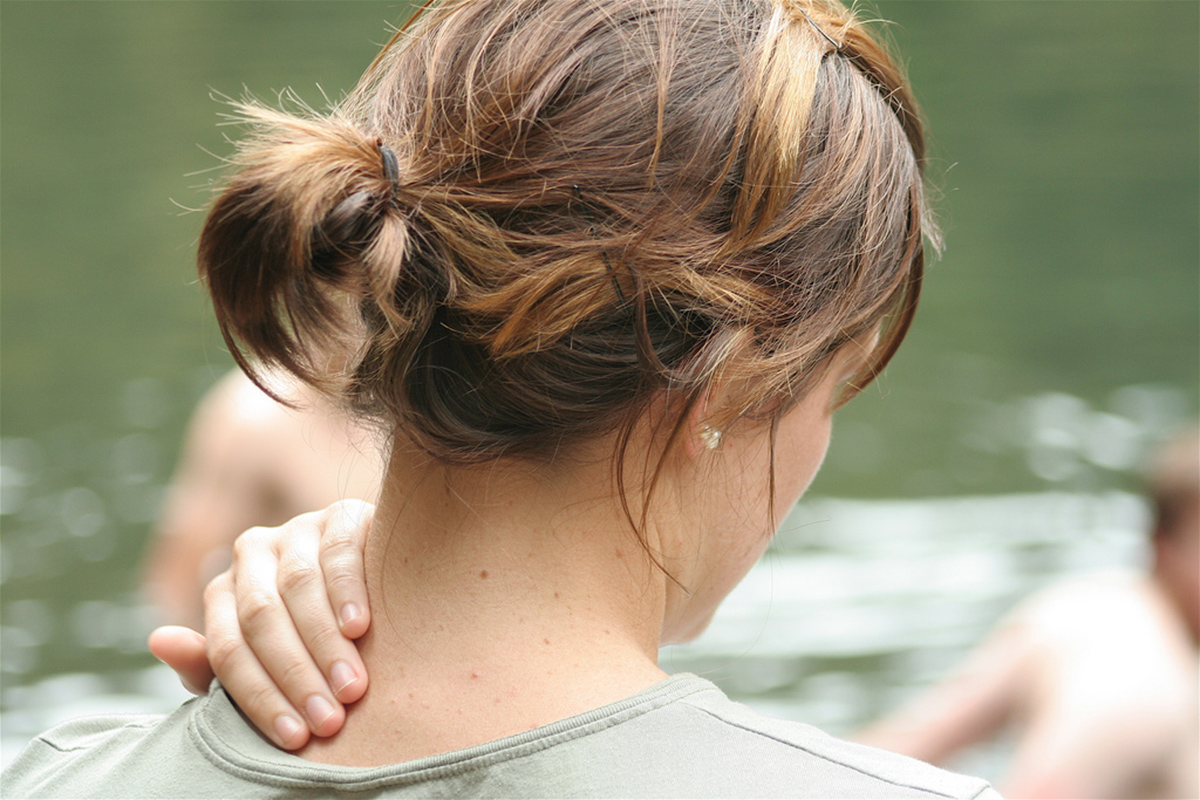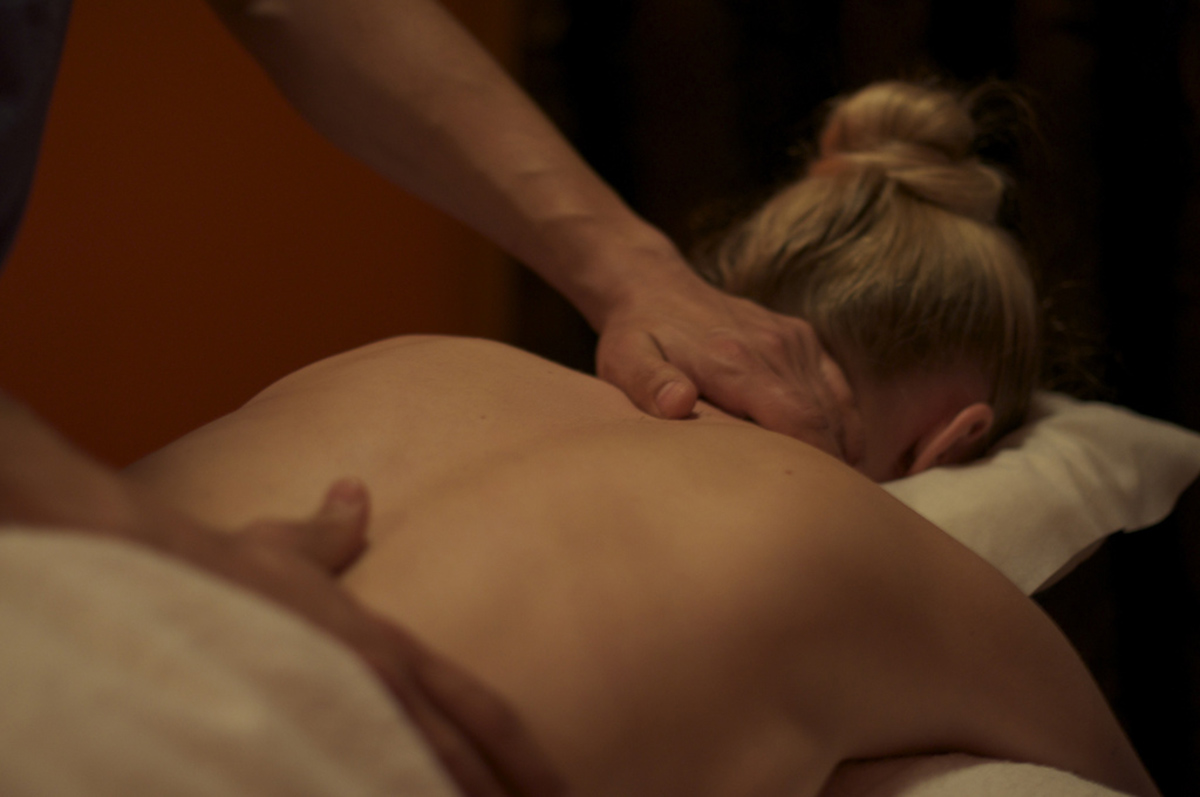Delayed-Onset Muscle Soreness, or DOMS, is an interesting subject.
First, let’s look at what we know about it:
Nothing.
OK, we know a few things. You can’t catch it from other people, it doesn’t kill you and it goes away in a few days, but realistically that’s about all we can say that’s supported by the evidence.

Yet, almost everyone who does training that’s aimed at strength or hypertrophy will experience DOMS at some point.
That’s what’s so interesting about it: we all have it and there are millions of theories floating about as to what causes it, but we really know next to nothing about it. Even the mechanism by which it actually occurs is weakly understood: is it lactic acid? Muscle fibers recovering from microtears? Some kind of central nervous system effect that’s unrelated to physical structures? Something metabolic? Maybe it’s a sign that you’re getting stronger, or that you’re gaining muscle. Maybe not. All these theories are confidently advanced. Ask around; everyone you know who knows about fitness will give you a different answer, backed by some evidence, but not conclusive. We don’t even know what it is, let alone why or how.
And yet, just like people knew how to build houses before they had a mechanical engineer around to tell them the Young’s modulus of roof beams, or blacksmiths could make steel before we had any idea there was such a thing as a chemical element, there are some practices that have the weight of empirical success behind them.
Additionally, we can see some effects of DOMS that aren’t just pain. If you’ve ever experienced serious pain, you’ll know that “just pain” is an interesting turn of phrase at best; but DOMS, besides sometimes being severely painful, also causes reduced motor unit recruitment and decreased range of joint motion, reduced muscle elasticity and decreases tendon and ligament elasticity too. That means DOMS can keep you from training or make you more likely to get injured.
READ 6 Best Exercises That Will Boost Your Metabolism
We also have a pretty clear idea of what kind of exercise is associated with DOMS. Basically, sprinting and jumping, anything with a major eccentric component, or new movements tend to be the biggest triggers, and they’re usually going to be felt in the legs, though heavy eccentric upper body movements can trigger DOMS in the muscles of the arms, chest and back. Sadly for some, DOMS also has a genetic component. Some people just don’t get sore. Others get days of soreness even after years of consistent, effective training. We don’t know why.
5 Science-Backed Ways To Ease DOMS
1: Massage
DOMS is a tissue issue, so it makes sense that soft tissue oriented therapies like massage would give you some relief. And the evidence support that. Stretching is pretty much totally ineffective — even for improving flexibility, let alone recovering from DOMS, whether you use it before or after training. But massage is a different story. And it doesn’t have to be massage. Any tissue work will do: foam rolling is also effective. In many cases you can massage yourself, too — DOMS is most likely in the legs anyway, and massaging your own quads is fairly doable. About two hours after training is the ideal time for this.

How does it work? It may work because massage makes you feel better, and feeling better makes pain hurt less. It may also help the body shuttle waste products away from the muscles in question. Without knowing more about what actually causes DOMS it’s hard to say for sure.
2: Compression
Compression devices like elastic bandages or compression sports clothes can help reduce exercise-induced muscle pain. That’s the good news. The bad news is that the more that pain resembles classic DOMS, the less effective compression devices seem to be at controlling it.
How does it work? Potentially by restricting blood flow.
3: Caffeine
Caffeine isn’t just the cure for everything because I happen to like coffee. In a recent study, two groups of trainees were given either caffeine or placebo before training, then did a workout designed to elicit DOMS. The caffeine group had a lower rate of perceived exertion and performed more reps on their final sets: they felt it was easier and they did more. They also recovered faster; by the third day of recovery from a workout specifically designed to cause DOMS their soreness was completely gone. The dose used was 5mg/kg bodyweight for men, and in a similar study women took the same dose post-workout and found DOMS cut by between 24% and 48% depending on the motor patterns being assessed. For most people who aren’t unusually large or small, 5mg/kg bodyweight is a couple of cups of coffee, nothing that’s likely to cause any adverse effects.
How does it work? Caffeine probably works by blocking pain signals to the CNS and boosting neural drive.
4: Branched-Chain Amino Acids
BCAAs are a staple supplement for serious trainees. But they can also reduce DOMS significantly. In a study, untrained men used BCAAs in recovery from a DOMS-inducing workout and both muscle soreness and strength reduction fell significantly. The subjects took BCAAs for seven days before training and for two days afterwards.
How does it work? Alone among the treatments on offer, BCAAs may actually work by directly reducing muscle damage.
READ Muscle Tissue Damage And Home Based Recovery Techniques
5: Antioxidants
Taking antioxidants orally can be an effective way to reduce DOMS. A 1992 study found that taking 1mg of Vitamin C for three days before and seven days after a strenuous workout reduced muscle soreness by up to 44 percent. Vitamin E can reduce signs of muscle damage after exercise but doesn’t seem to have much effect on DOMS. Finally, cucurmin, an antioxidant and anti-inflammatory found in turmeric, has been shown to effective when used topically.
- The effect of caffeine ingestion on delayed onset muscle soreness, Hurley et al http://www.ncbi.nlm.nih.gov/pubmed/24164961
- Branched-chain amino acid supplementation before squat exercise and delayed-onset muscle soreness, Shimomura et al http://www.ncbi.nlm.nih.gov/pubmed/20601741
- Effects of Massage on Delayed-Onset Muscle Soreness, Swelling, and Recovery of Muscle Function, Zainuddin et al http://www.ncbi.nlm.nih.gov/pmc/articles/PMC1250256/
- Treatment and Prevention of Delayed Onset Muscle Soreness, Declan et al http://static1.squarespace.com/static/526c72d0e4b0c72bb55e640b/t/5441cf2ce4b0881390291780/1413599020420/Treatment+and+Prevention+of+Delayed+Onset+Muscle+Soreness.pdf
- Photo courtesy of Aidan Jones via Flickr: www.flickr.com/photos/aidan_jones/3117187373
- Photo courtesy of Aidan Jones via Flickr: www.flickr.com/photos/aidan_jones/3117187373
- Photo courtesy of Nick J Webb via Flickr: www.flickr.com/photos/nickwebb/3968718397


Your thoughts on this